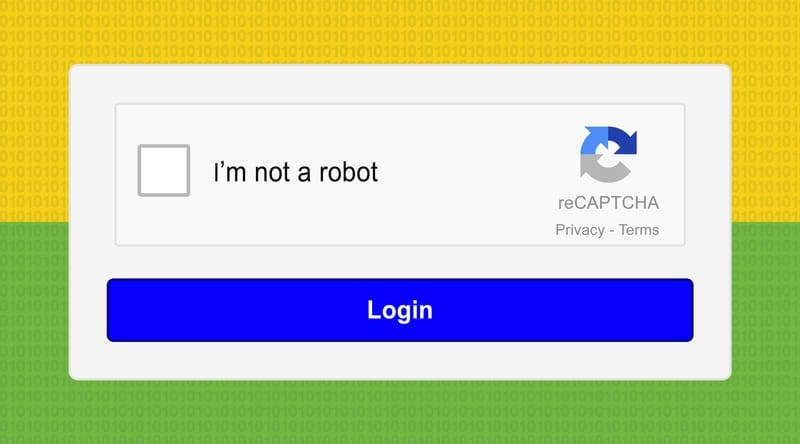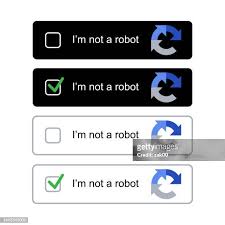CAPTCHA, or the ‘Completely Automated Public Turing Test to Tell Computers and Humans Apart,’ has become a crucial defense in the intricate web of the internet, where bots have long been the shadowy entities causing widespread chaos by targeting websites and mobile apps alike.

These malicious bots, designed to automate tasks that are detrimental to online ecosystems, consume massive amounts of computer power, spread spam, scrape data from websites, and even register and authenticate users for fraudulent purposes.
As these automated threats grew in scale and sophistication, a digital gatekeeper emerged: the Completely Automated Public Turing Test to Tell Computers and Humans Apart (CAPTCHA).
The app can definitely serve as a critical barrier in the ongoing battle against automated attacks. They play a pivotal role in fortifying cybersecurity and enhancing user experience — though it’s clear that this is only a temporary solution in the ever-evolving cat-and-mouse game between humans and AI.
For instance, denial-of-service (DoS) attacks, which aim to overwhelm and incapacitate web servers, are a prime example of how bots can disrupt online services. The app effectively hinders these bots, mitigating their ability to carry out DoS attacks, send spam, and create fake accounts.
The utility of the app extends beyond mere security. In the financial sector, they are employed to thwart bots that attempt to steal sensitive customer information. Additionally, CAPTCHAs preserve the integrity of online surveys and voting systems by preventing automated bots from skewing results. These applications demonstrate the versatility of CAPTCHAs in safeguarding digital environments from a variety of automated threats.
The four faces of CAPTCHA

The app is designed to present tasks or questions that are straightforward for humans but difficult for machines to solve. Broadly, CAPTCHAs can be categorized into four types: text-based, image-based, audio-based, and behavior-based.
Text-based CAPTCHAs, one of the earliest and most widespread forms, challenge users to decipher distorted text or solve simple arithmetic problems like “18 + 5” or “23 – 7.” While these challenges were initially effective, advances in optical character recognition (OCR) algorithms have significantly diminished their effectiveness. Ironically, as text distortions become more complex to outsmart bots, they also become more challenging for real users to solve.
Audio CAPTCHAs offer an alternative for those with visual impairments, asking users to listen to a string of spoken numbers or letters and then type what they hear. However, background noise, low audio quality, and heavy distortion can make these apps difficult for humans to decipher, further complicating their use.
Image-based CAPTCHAs were developed to leverage the superior visual perception of humans over machines. Users are often asked to identify specific objects within images, such as selecting all squares containing traffic lights. While this approach remains somewhat effective, the line between human and machine perception continues to blur as AI becomes more adept at image recognition.
Behaviour-based CAPTCHAs, like the popular reCAPTCHA, analyze user interactions — such as keystroke patterns and mouse movements—to distinguish between humans and bots. This method capitalizes on the unpredictability of human behaviour, a trait that bots have yet to perfectly emulate. For example, reCAPTCHA may prompt users to simply check a box stating, “I am not a robot,” while silently analyzing the user’s behaviour to verify authenticity.
The AI vs. Human showdown

The app represents yet another front in the ongoing battle between artificial intelligence (AI) and human ingenuity. Today, AI has advanced to the point where it can solve many traditional CAPTCHA challenges with relative ease.
Deep learning algorithms have dramatically improved the capabilities of OCR, speech-to-text, and computer vision technologies, rendering many text-based, audio-based, and image-based apps obsolete.
To counter these advances, researchers have developed increasingly sophisticated methods, such as reCAPTCHA, which continuously evolve to keep pace with AI. However, the paradox lies in the fact that humans are inadvertently helping AI to become better at solving security measures provided by the app. Click farms, for example, employ large numbers of low-wage workers to complete the app’s challenges, training AI systems to mimic human behaviour more convincingly and evading defenses.
The future of CAPTCHAs
As AI continues to evolve, the future of this technology will likely shift towards more nuanced approaches. Future apps may focus more on analyzing user behaviour in ways that are harder for bots to replicate.
This could involve tracking more intricate patterns of interaction, making it increasingly difficult for automated systems to mimic human actions.
Biometric CAPTCHAs, such as fingerprint or facial recognition, may also become more prevalent, though they raise significant privacy concerns. Another potential replacement for CAPTCHAs could be blockchain technology, which uses verified credentials to authenticate users, ensuring that interactions come from genuine humans rather than bots.
Looking ahead, the app may evolve to incorporate real-time AI collaboration, constantly adapting and refining its methods to fend off automated intrusions.
This dynamic interaction between AI and this app’s technology could provide a more robust defense against bots, ensuring that the internet remains a safer and more secure place for all users.
In this ongoing battle, CAPTCHAs are more than just a line of defense; they are a testament to human ingenuity and the relentless pursuit of security in a world where the line between human and machine continues to blur. Just recently, a study by consulting firm Access Partnership revealed that AI could contribute PHP 2.8 trillion (approximately US$50.7 billion) to the Philippine economy by 2030.
As we move forward, the challenge will be to stay ahead of the ever-advancing capabilities of AI, ensuring that the app remains an effective tool in our cybersecurity arsenal.






